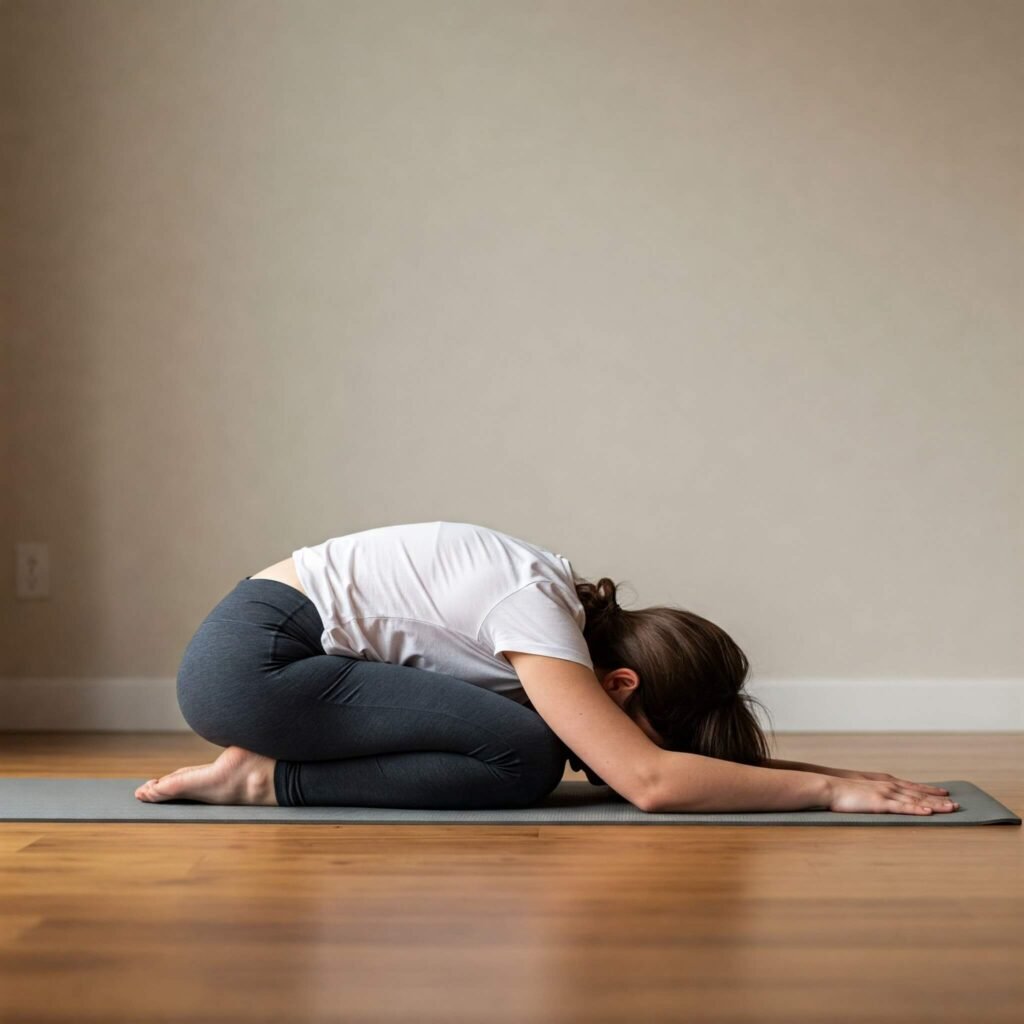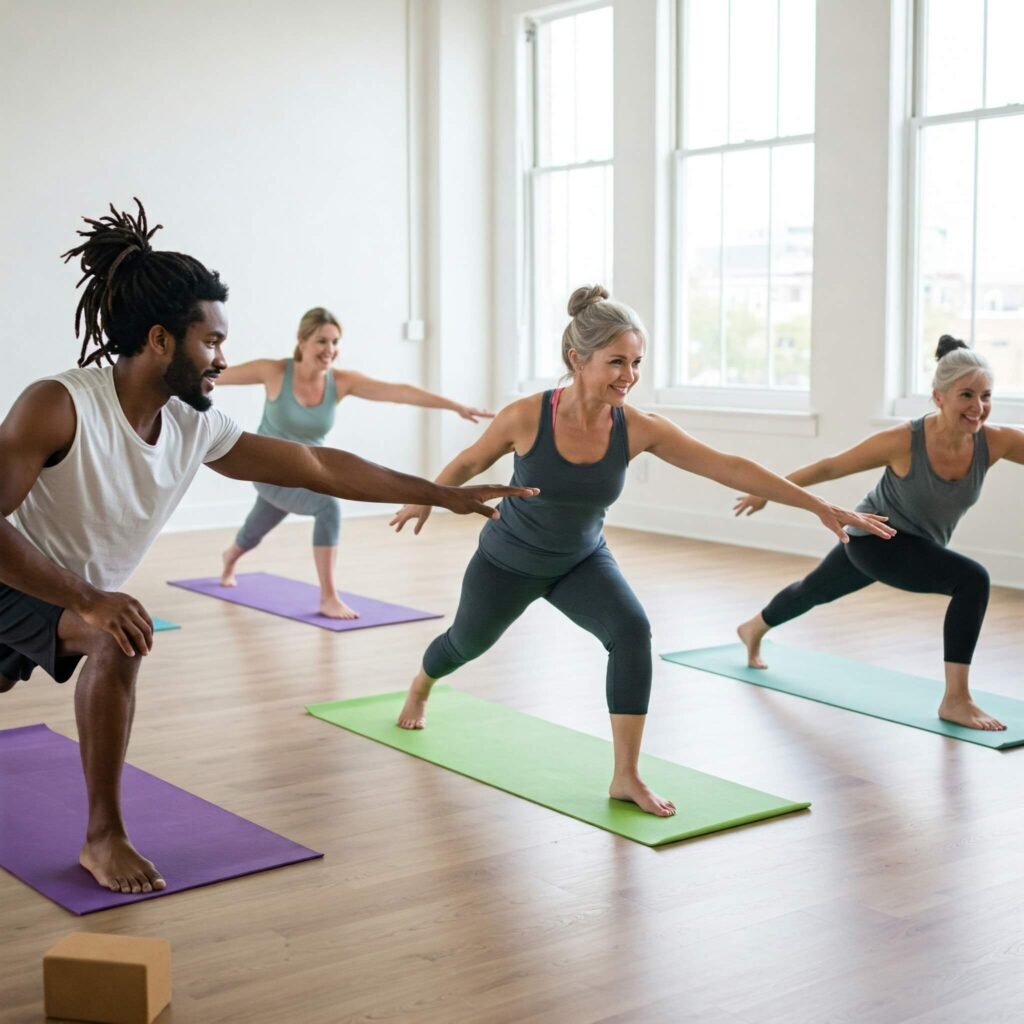Yoga for beginners is an exciting journey toward improved physical health, mental clarity, and emotional balance. Whether you’re looking to increase flexibility, reduce stress, or find a mindful way to stay active, starting a yoga practice can be transformative. This comprehensive guide will walk you through everything you need to know to begin your yoga journey with confidence, from basic poses to practical tips for creating a sustainable practice.
Why Start Yoga? The Benefits of Yoga for Beginners
Yoga is more than just stretching; it’s a holistic practice that combines movement, breath, and mindfulness. According to a 2022 study by the National Institutes of Health, yoga can reduce stress by 30% and improve flexibility by up to 35% in just eight weeks. For beginners, yoga offers accessible benefits, including:
- Physical Health: Improves flexibility, strength, and posture.
- Mental Clarity: Reduces anxiety and enhances focus through mindfulness.
- Emotional Balance: Promotes relaxation and emotional resilience.
- Accessibility: Requires minimal equipment and can be done anywhere.
Outbound Link: Learn more about yoga’s health benefits from the National Institutes of Health.
Getting Started with Yoga for Beginners
Starting a yoga practice doesn’t require fancy equipment or prior experience. Here’s how to set yourself up for success:
1. Create a Comfortable Space
Find a quiet, clutter-free area for your practice. A yoga mat is ideal, but a soft surface like a rug works too. Ensure good ventilation and natural light to enhance the calming atmosphere.

2. Gather Basic Equipment
- Yoga Mat: Provides cushioning and grip.
- Props (Optional): Blocks, straps, or a bolster can make poses more accessible.
- Comfortable Clothing: Wear breathable, stretchy clothes for ease of movement.
3. Set Realistic Goals
Start with 10-15 minute sessions, 2-3 times a week. Consistency is key to building a sustainable yoga routine.
Outbound Link: Check out beginner-friendly yoga mats at Yoga Journal.
Essential Yoga Poses for Beginners
Mastering a few foundational poses is a great way to build confidence in your yoga practice. Below are five beginner-friendly poses with step-by-step instructions:
1. Mountain Pose (Tadasana)
- Why: Improves posture and grounding.
- How: Stand tall, feet together, arms relaxed. Engage your core and lift through the crown of your head. Breathe deeply for 5 breaths.
2. Downward-Facing Dog (Adho Mukha Svanasana)
- Why: Stretches the entire body and builds strength.
- How: Start on all fours, tuck your toes, and lift your hips toward the ceiling, forming an inverted V. Keep knees slightly bent if tight. Hold for 3-5 breaths.
3. Child’s Pose (Balasana)
- Why: Promotes relaxation and stress relief.
- How: Kneel, sit back on your heels, and stretch your arms forward, resting your forehead on the ground. Breathe deeply for 5-10 breaths.
4. Cat-Cow Pose (Marjaryasana-Bitilasana)
- Why: Warms up the spine and improves flexibility.
- How: On all fours, alternate between arching your back (Cow) and rounding it (Cat) with your breath. Repeat for 5 cycles.
5. Corpse Pose (Savasana)
- Why: Encourages relaxation and mindfulness.
- How: Lie flat on your back, arms relaxed by your sides, palms up. Close your eyes and focus on your breath for 2-5 minutes.

Outbound Link: Watch video tutorials for these poses at Yoga International.
Building a Beginner Yoga Routine
A simple yoga routine can help you stay consistent and progress. Here’s a sample 15-minute flow for beginners:
- Warm-Up (3 minutes): Start with 5 rounds of Cat-Cow and gentle neck rolls.
- Standing Poses (5 minutes): Practice Mountain Pose and Downward-Facing Dog.
- Restorative Poses (5 minutes): Move into Child’s Pose and end with Corpse Pose.
- Cool Down (2 minutes): Sit cross-legged, focus on deep breathing, and set an intention for your day.
Pro Tip: Use a free app like Down Dog or follow beginner yoga videos on YouTube to guide your practice.
Common Mistakes to Avoid in Yoga for Beginners
As you start your yoga journey, steer clear of these pitfalls:
- Overdoing It: Pushing too hard can lead to injury. Listen to your body.
- Skipping Breathwork: Syncing breath with movement enhances mindfulness.
- Comparing Yourself: Everyone’s yoga journey is unique—focus on your progress.
Tips to Stay Motivated in Your Yoga Practice
- Track Progress: Keep a journal to note improvements in flexibility or mood.
- Join a Community: Online forums or local classes can provide support.
- Celebrate Small Wins: Mastering a pose or practicing consistently is worth celebrating!

Outbound Link: Find local yoga classes through Mindbody.
FAQs About Yoga for Beginners
How often should beginners practice yoga?
Aim for 2-3 sessions per week, starting with 10-15 minutes and gradually increasing duration.
Do I need to be flexible to start yoga?
No! Yoga improves flexibility over time. Start where you are.
Can I practice yoga at home?
Absolutely! Many beginners start at home with online videos or apps.
Conclusion: Start Your Yoga Journey Today
Yoga for beginners is an accessible, rewarding way to enhance your physical and mental well-being. By starting with simple poses, creating a comfortable space, and staying consistent, you’ll build>ractitioner. The key is to begin, take it one step at a time, and enjoy the process. Ready to start your yoga practice? Roll out your mat and take the first step toward a healthier, more balanced you.
Outbound link:
“For a detailed step-by-step guide, check out this Yoga for Beginners resource.”
































